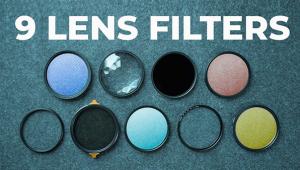Business Trends
Building Your Upscale Portrait Clientele
The Sandra David project
began in 1992 when David Rigg and Sandra Crebbin formed a company for
marketing their fine art images in galleries and in print. |
|||
Today, Crebbin and Rigg reside
in a 4000 square foot custom home in a suburban area of Southern California.
With a layout that provides for complete separation between living and
client areas, it is ideal for marketing the upscale portrait experience.
Located in one of the oldest upscale neighborhoods, Crebbin and Rigg have
turned their 3/4 acre lot into a portrait park. It is filled with gardens
and landscaping specifically designed to enhance the client's environmental
portrait experience by providing a private, peaceful setting in which
to explore a subject's personality. |
|||
Crebbin and Rigg decided to
target the upscale market from the start. The Sandra David clients are
mostly business owners and white-collar professionals of above average
net worth. They are ordinary hard working, successful people who are very
careful how they invest their disposable income and look for value and
exceptional service. Rigg says, "Until recently, studio owners of
average competency have been able to make a comfortable living by targeting
the middle segment of the market through discount oriented promotions.
These `loss leader' promotions generally work on the principal
of thirds. One third of the respondents will make purchases that will
pay for the promotion and make up for the third who will `ace'
the promotion. The final third will make above average purchases and provide
the profit structure and become loyal, repeat clients. The Sandra David
concept is to dump the two thirds that drain your creativity and profit
margins, and concentrate on the third that value what we do and are willing
to invest in it." |
|||
One of the most successful
marketing techniques for the upscale clientele is "lifecycle selling."
This is a marketing strategy that pre-sells clients to return at their
next "cycle" of life for another portrait. They become lifelong
clients. For example when clients come to Sandra David about senior portraits,
they are already pre-sold through the studio's reputation, marketing,
and telephone consulting. Since a hard sell isn't necessary, the
discussion (in a relaxed, homelike environment) moves to the beautiful
family portraits on the wall. A future sale is born! This leads the Sandra
David clients to make major portrait investments with the studio five
to six times in a lifetime. They do not use inexpensive prices to sell
or loss leader "specials." When a client asks if they have
any specials, Sandra David tells them, "Everything we do is special.
What do you have in mind? When can you come for a visit so we can show
you some work we have done for other clients and give you all the details
regarding having a portrait created?" It is a marketing technique
that qualifies and closes the sale. Rigg, "Truth is, we don't
get a lot of the `How much is an 8x10?' calls anymore. The
types of people who are drawn to our marketing are the types who are intelligent
enough to know that it won't be cheap. Having a reputation for being
expensive is the best thing that can happen to you. So, in a sense, the
marketing itself becomes a screening device. That gold signature in the
corner of the stretched canvas, in its exquisite frame that Crebbin picked
out, has become a status symbol in finer homes and offices in the community.
We find that sometimes the value of the investment is often exaggerated
when inquired about by the owner's friends and associates. Occasionally
we will get prospects who are relieved to find out that it is `only
going to cost a few thousand dollars' for what they really want."
|
- Log in or register to post comments




















































